Hummingbird Eyes Can See More Colors Than Humans
Updated: Feb. 02, 2024
A research study reveals a hummingbird's large eyes see the world in a wider range of brilliant colors than people can even imagine.
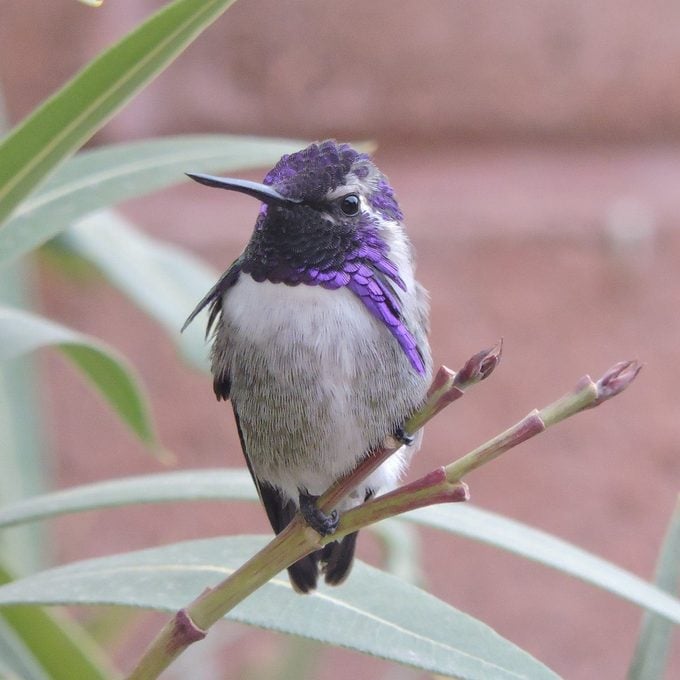
Hummingbirds are tiny marvels of nature, fascinating us every time they flutter by. Chalk it up to the speed at which their long, thin tongues draw nectar from flowers (up to 13 times per second) or to their ability to use their sturdy tail feathers to make hairpin turns. Still, one of the most interesting aspects of hummingbirds is not apparent to the naked eye. In fact, it was realized only in the last few years. A recent study published by the National Academy of Sciences called “Wild Hummingbirds Discriminate Nonspectral Colors” suggests that hummingbird eyes see the world in a range of brilliant colors, of which humans can only dream.
On This Page
Science of Hummingbird Eyes
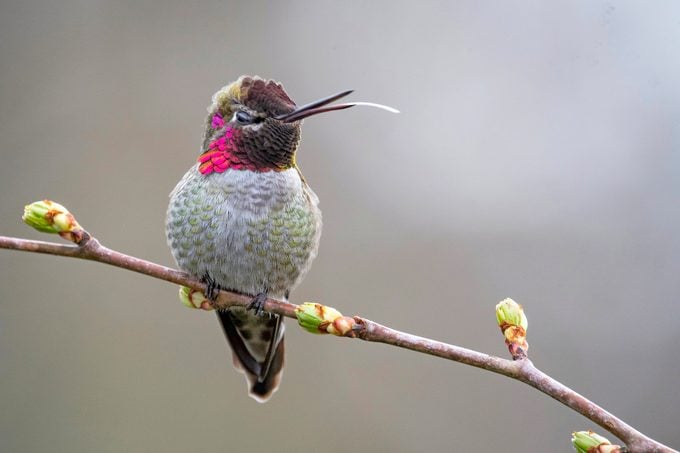
A hummingbird’s relatively large eyes are wired to pick up many more hues than human eyes can see. Hummingbird retinas possess four types of cones, while humans have only three that detect blue, green and red tones. The fourth type of cone that hummingbird eyes have is sensitive to ultraviolet light, which people cannot see. And when the ultraviolet hues blend with ones that humans can perceive, new colors appear.
Of all the colors in the rainbow, hummingbirds love the color red, and for a very good reason: Their retinas have a more dense concentration of cones, which mutes cooler shades like blue and heightens warmer shades like red and yellow. It’s fascinating how a small creature can have such intricate anatomy.
How Hummingbirds Use Their Keen Eyesight
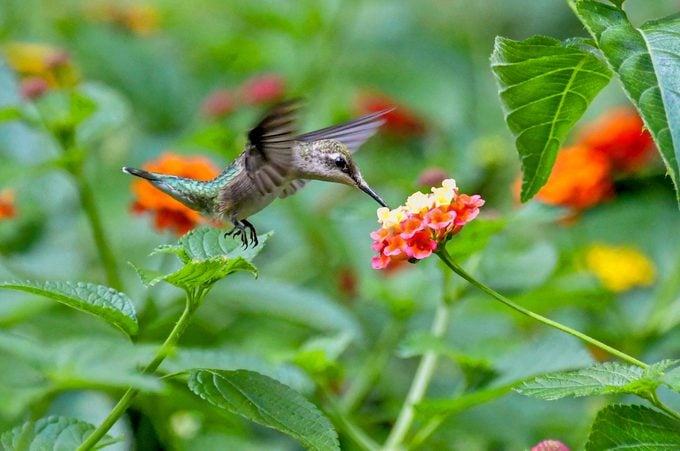
Having expansive vision helps hummers do a variety of tasks, including finding mates and spotting food sources. And this is especially true when it comes to locating flowers that hold their life-sustaining nectar.
If you’re looking to attract hummingbirds to your yard, plant colorful flowers like phlox, hollyhock, foxglove and lantana. Remember, hummingbirds love the color red, so the more red you can get blooming, the faster a few new friends may be drawn in.
The next time you see a jeweled wonder fly by, take a moment to not only to welcome the visitor with an array of appealing nectar sources but to appreciate and imagine the spectacular colors that it recognizes out in nature.
What makes hummingbird feathers so shimmery?
Field Test
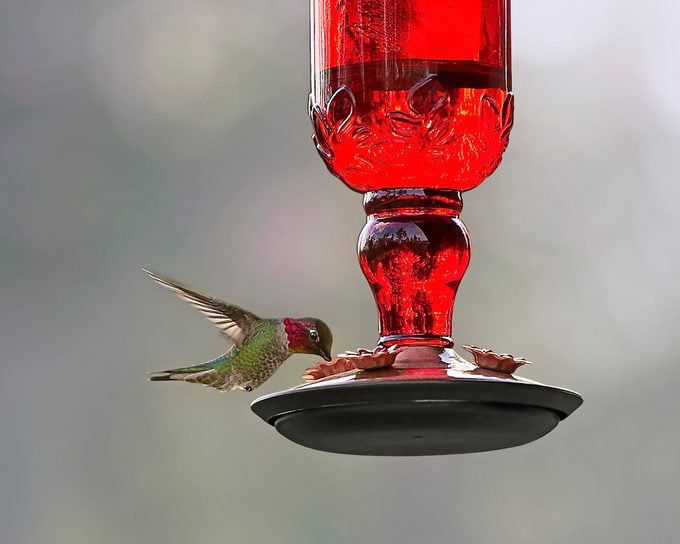
Here’s how the researchers proved their ultraviolet theory.
The scientists performed outdoor experiments with wild hummingbirds to test how well they see different ultraviolet colors. They engineered special LED tubes that emitted several colors, both on the visible and ultraviolet (UV) spectrum. They placed the LED tubes next to two feeders. The one with plain water did not give off ultraviolet rays and another with sugar water did give off UV light.
They trained hummingbirds to associate the UV light with the reward of sugar water and regular light with plain water. When scientists rearranged the placement of the feeders, similar to the Pavlovian dog experiment, the hummingbirds were still more quickly drawn to the feeder giving off ultraviolet light—which proved that the birds could tell the difference between the one emitting the special rays and the normal feeder.
The hummingbird heart rate is unbelievably fast.
Do Your Own Experiments
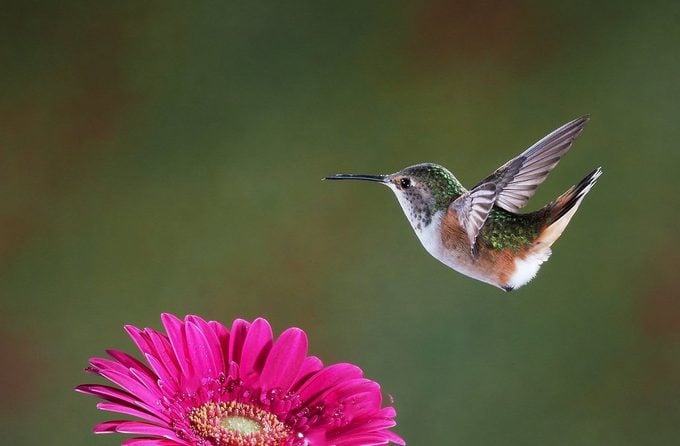
Citizen science projects such as eBird, Backyard Bird Count and NestWatch are looking for birders and gardeners to provide valuable data for researchers. Visit their websites to look up opportunities and see how you can lend a scientific helping hand.
How fast do hummingbirds fly and flap their wings?
- Additional reporting by Kelly Aiglon
- Reviewed by birding experts Kenn and Kimberly Kaufman
Why Trust Us
For nearly 30 years, Birds & Blooms, a Trusted Media Brand, has been inspiring readers to have a lifelong love of birding, gardening and nature. We are the #1 bird and garden magazine in North America and a trusted online resource for over 15 million outdoor enthusiasts annually. Our library of thousands of informative articles and how-tos has been written by trusted journalists and fact-checked by bird and garden experts for accuracy. In addition to our staff of experienced gardeners and bird-watchers, we hire individuals who have years of education and hands-on experience with birding, bird feeding, gardening, butterflies, bugs and more. Learn more about Birds & Blooms, our field editor program, and our submission guidelines.
Sources
- National Academy of Sciences of the United States
- National Geographic




















